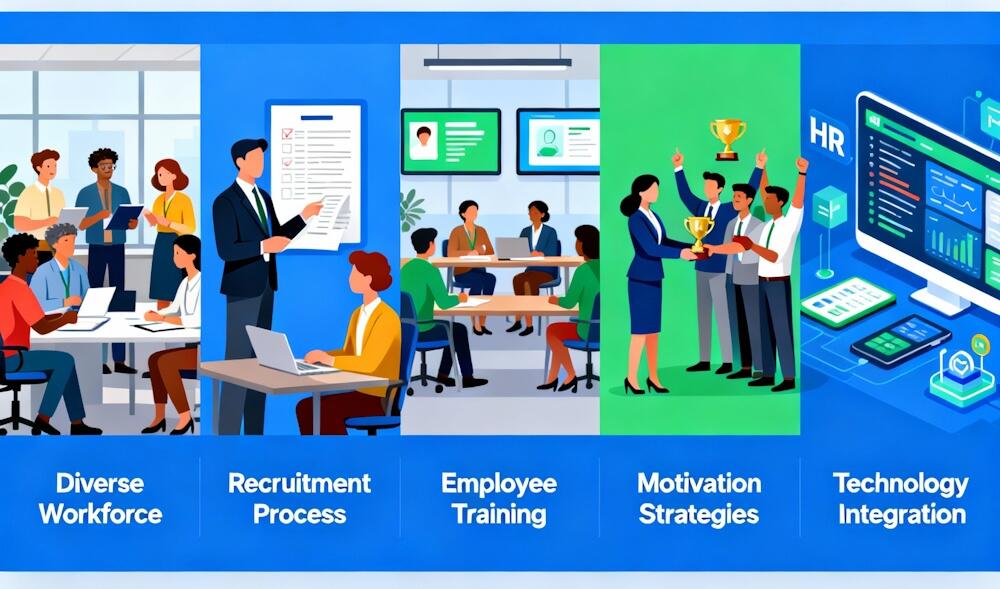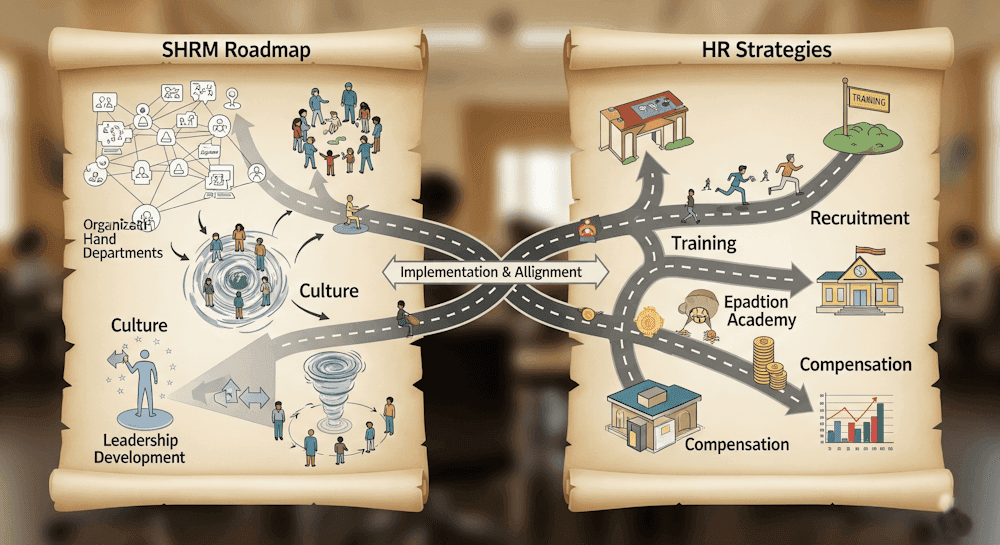Introduction
These days, traditional sources of competitive advantage still matter, but not as much as they used to (Pfeffer, 1994). The Resource-Based View (RBV) says that companies can stay ahead when they make the most of their internal resources — the ones that are valuable, rare, and hard to copy.
And honestly, there’s nothing more valuable than people. In recent years, more and more businesses have realized that their employees are their biggest strength. It’s not just about hiring skilled workers — it’s also about how those people are managed, motivated, and developed. A strong, well-managed team can easily become a company’s greatest competitive edge.
HRM and Strategic Business Planning
When experts talk about linking Human Resource Management (HRM) with strategic business planning, two main ideas usually come up.
1. HR as a Reactive Function
In the first approach, HR doesn’t really lead — it reacts. Here, organizational strategy drives HR policies. The company decides what direction it’s taking, and HR follows that plan. So, things like hiring, training, and pay are all adjusted to match company goals or the product’s life cycle. In simple terms, HR plays a supporting role.
2. HR as a Proactive Partner
The second approach flips the script. It says that HR shouldn’t just react — it should actually help shape the strategy. According to Golden and Ramanujam (1985), HR leaders need to be part of the decision-making process itself, not just follow top management’s lead. That means HR professionals become real partners in planning what the company does next.
This idea pushed HRM into a more strategic space, where it doesn’t just “support” the business — it helps build it.
Golden and Ramanujam’s Model (1985)
Golden and Ramanujam came up with one of the most recognized models explaining how HR and corporate strategy connect. They identified four types of relationships between the two:
- Administrative Link: HR handles the basics — payroll, attendance, compliance, etc.
- One-Way Link: Strategy influences HR, but HR doesn’t influence strategy.
- Two-Way Link: There’s some back-and-forth — HR gives input and also follows the company’s direction.
- Integrative Link: The strongest connection — HR is fully involved in shaping strategic decisions from the start.
In their study, they found that this integrative relationship was pretty rare. Out of ten companies they examined, only one had achieved it. Later, Buller’s study backed up their findings, showing that most organizations still hadn’t reached that level of integration.
Limited Strategic Integration in Practice
Even though we hear a lot about strategic HRM, real-world examples of full integration are still limited. Many studies show that HR and business strategy are connected only in theory — in practice, the two still operate somewhat separately.
That means while companies talk about “strategic HR,” they often fall back into traditional routines where HR focuses on administrative tasks rather than influencing top-level business moves.
What Determines Strategic Integration
Golden and Ramanujam identified two main sets of factors that affect how closely HR and strategy align.
1. Organization-Specific Factors
These depend on the company itself — size, leadership style, internal culture, and whether top executives actually value HR’s input in planning.
2. HR-Specific Factors
These have to do with the HR department — its reputation, the expertise of HR professionals, and how involved line managers are in HR issues.
Interestingly, they found that managers outside HR rarely spend much time on HR-related discussions. That’s why their framework focuses more on communication and cooperation between HR leaders and top management rather than a full, hands-on integration of HR into business strategy.
How the Integration Evolves Over Time
Another interesting point about Golden and Ramanujam’s idea is that their four levels — administrative, one-way, two-way, and integrative — can be seen as stages of growth.
Organizations usually start with basic HR functions and, over time, move toward closer strategic involvement. So as communication and cooperation between HR and management improve, the company moves up the ladder toward full integration.
But here’s the catch — even though this seems like a natural progression, it doesn’t automatically guarantee true strategic HRM. It takes continuous effort, shared vision, and trust between HR and top management.
It’s All About Roles and Collaboration
Most of the debate about HRM and business strategy comes down to who does what. Golden and Ramanujam’s framework looks at how both sides — HR and senior leaders — work together and what roles they play.
That’s an interesting topic by itself. But the question remains — does better collaboration always mean full strategic integration? Maybe not. For HR to truly play a strategic role, it also needs a seat at the decision-making table and a culture that values people strategy as much as financial or operational goals.
Administrative and One-Way Links
Many organizations still operate at the administrative or one-way stage. In those cases, the business strategy is mostly shaped by market trends and senior management decisions, and HR simply follows along.
Here, HR’s job is to find and develop people who can deliver what the strategy demands. The HR function becomes a support system that makes sure employees’ skills and behaviors fit the company’s goals.
Most experts agree that a “fit” between HR and business strategy is important. When HR practices are aligned with what the business is trying to achieve, it leads to better results, stronger culture, and higher performance.
Conclusion
Golden and Ramanujam’s work remains one of the cornerstones of understanding how HR and corporate strategy connect. Their model shows that while companies like to talk about “strategic HR,” actually achieving it is another story.
To make HRM truly strategic, organizations need to move from reaction to participation — from simply executing plans to helping design them.
When HR becomes a proactive player in strategic discussions, it doesn’t just manage people — it drives performance, builds culture, and helps the organization stay competitive for the long haul.







